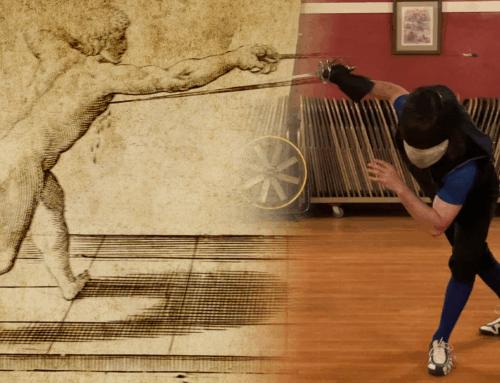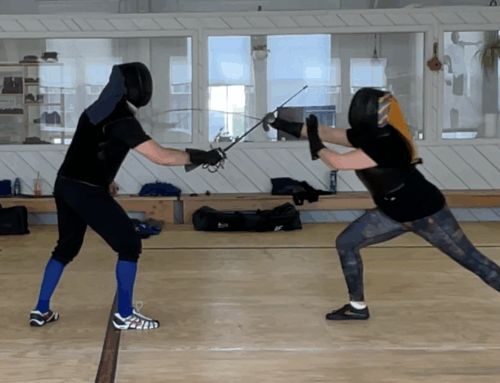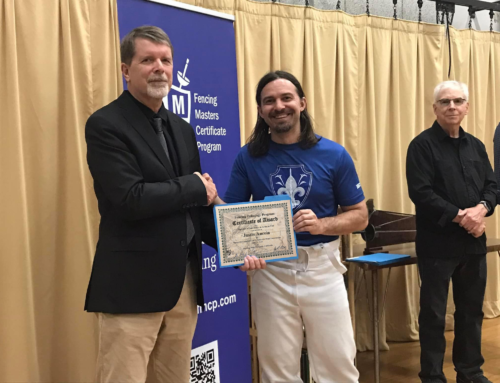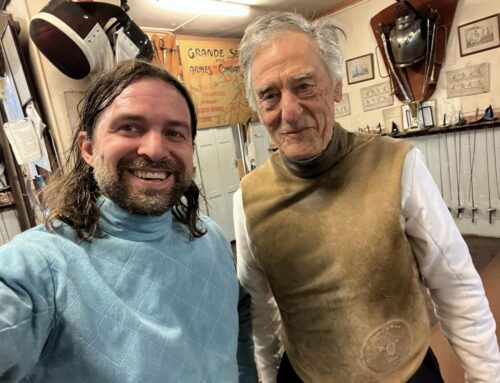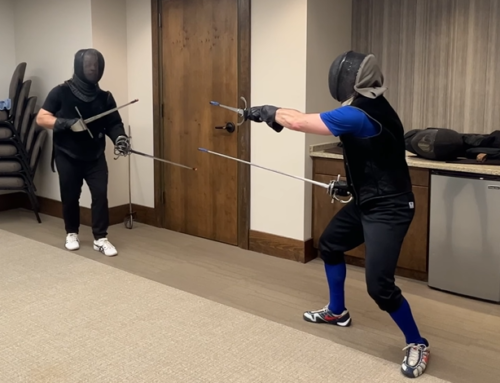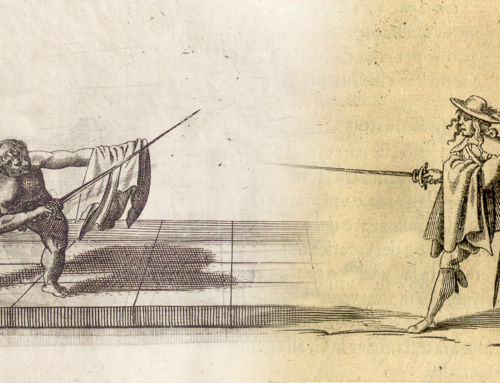I had a great day of fencing on Saturday at Balfar’s Challenge. Not only did my rapier melee team (Remy’s Angels II: Electric Boogaloo) came in first place, I also finished strong in second place in the afternoon’s Pennsic Qualifer Tourney in which I rolled out with single rapier the entire time.
I had to fight through my entire fencing family tree which was amusing in its own right. This fight against my cadet, Gregori, on the anniversary of his caddeting, was possibly the most memorable one ’cause of how I won — with a low line void & strike under the opponent’s sword arm.
His reaction was also pretty fantastic. We were laughing a good five minutes after this.
Breakdown
To describe what’s happening in the video (starting at 00:58 into the video):
- I’ve found Gregori on the inside line and advance with a slight arm extension. I’m prepared to just do a lunge in quarta, but Gregori sees the tempo.
- He performs a cavazione (disengage) to the outside line and thrusts at my head.
- I turn my hand over into seconda and lower my body below my sword, keeping my body and head behind the guard of my weapon. In the process, I finish with my lunge and then keep walking pass to make sure he can’t get a late hit in.
It’s a move I’ve drilled a thousand times but so rarely get to actually implement. It’s also an extremely satisfying move.
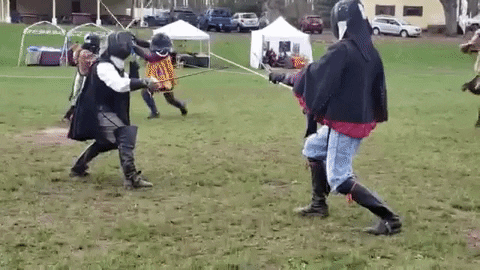
A Technique from the Masters
This is a common play in the Italian rapier system. We see it in Fabris’s Plate 35, Capoferro Plate 14, and Alfieri Chapter/Plate 16.
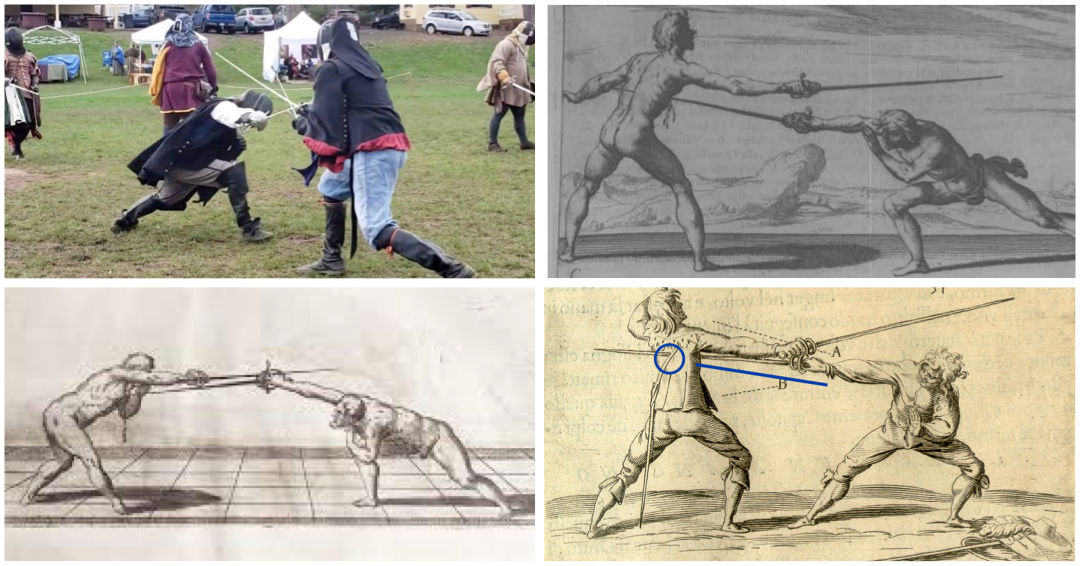
Fabris Plate 35
Salvator Fabris describes the play in this way:
Both fencers are facing each other inside in the third guard, and our fencer moves to find the opponent’s sword. The opponent takes the tempo and performs a cavaziones to the outside while turning his hand in second: his design is to go forward and strike our fencer over his sword in the opening created by the latter’s original motion. But out fencer, seeing the cavazione and the blow about to be delivered, takes the tempo himself: he turn his hand in first while lowering his body so as to completely cover his head with his hilt and right arm.
Capoferro Plate 14
Ridolfo Capoferro describes the play as such:
You gain the sword of your opponent to the inside. He performs a cavazione to attack you with a thrust to the face. You lower your body, perform an accrescimento with your right leg in the same tempo, and strike him in contratempo under his sword in seconda.
Alfieri Chapter 16
Francesco Alfieri describes a similar move:
To use this technique, the opponent must first be in terza, with your gaining his sword, his performing a cavazione and the attack. In the same tempo, you avoid his strike by lowering your body, hitting him instead.
Period techniques. They work.
Thanks to Millicent Rowan for snagging video of this fight and the others.
Plate references: Fabris Plate 35, Capoferro Plate 14, Alfieri Plate 16



